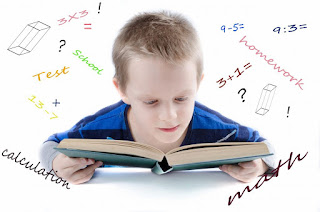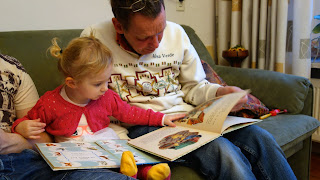Throw Out The Math Books!
When my older two went to the local high school, they did so well in math that the teacher is still certain that I must be a math major. The truth is, I flunked out of math in high school. We are pretty good friends, but this teacher still thinks I’m lying 

My secret? Throw out the math books. Until you get into the upper-level subjects like Algebra and Geometry, there is only one of good use for math books – to cut word problems out of to put in a box so the kids can draw them out at random. There may be a few people out there who learn math well the way math texts are set up, but for most of us, they are set up to confuse.
Why they teach addition only for 3 weeks and then switch to subtraction only for 3 weeks is beyond me. Most kids are just starting to catch on to the addition by the time they switch. Then by the time they are starting to catch on to the subtraction, they switch back to addition the kids have forgotten how to do that by then! To make matters worse, the kids have to do mountains of boring calculations every day. Their little brains just can’t digest that much!
Here is the right order to teach math:
- Addition only until they can add a column of four 4-digit numbers.
- Then subtraction while doing a couple of addition problems a day. Do not start multiplication until your child can subtract 4 digit numbers.
- Stop for a bit here. Have your child do one review problem each of addition and subtraction. Get yourself some old math textbooks and cut out addition and subtraction word problems to put in a container. Have your child draw two problems out each day and help them figure out whether it is an addition or a subtraction problem and how to set up and work the problem.
- Teach place values to a million and introduce decimal places.
- Teach counting money.
- Teach skip counting, not only 2s, 5s and 10s, but 3s, 4s, 6s, 7s … all the way up to 15s.
- Then multiplication with review work on the things they have already learned. Work on these until they can multiply four digit numbers and numbers with decimals.
- Then division with one review problem for each category of the above. Work until they can divide 7 digit numbers and decimals.
- Then fractions.
Things like time, measuring and Roman numerals can be mixed in there just about any time, but make sure your children master the basics in the right order and don’t require more than 8 to 10 problems a day on a worksheet. Play games for drill practice and review whenever possible. They will learn it faster and without buckets of tears.
One other secret is to realize that math is a lot like riding a bike. Introduce new concepts by first writing them down as they watch. Then have them write the problem down as you tell them each thing to write. Continue doing this for a week or so. Then ask them to try to do a part of it themselves. Each time you do that concept, ask them to try to do a little more on their own. Be patient, and tell them to be patient with themselves. After a while, they will catch on and ride off without you!
In addition to my own kids, I wound up homeschooling several kids besides my own. Most came to me when they were in 5th or 6th grade and failing. Using this order, I could take them from not being able to add to doing very complicated problems in just a couple of years. You can too! Just ditch the math books!
~ God Bless!
Grama Sue




Comments
Post a Comment
All comments are moderated to prevent inappropriate content.